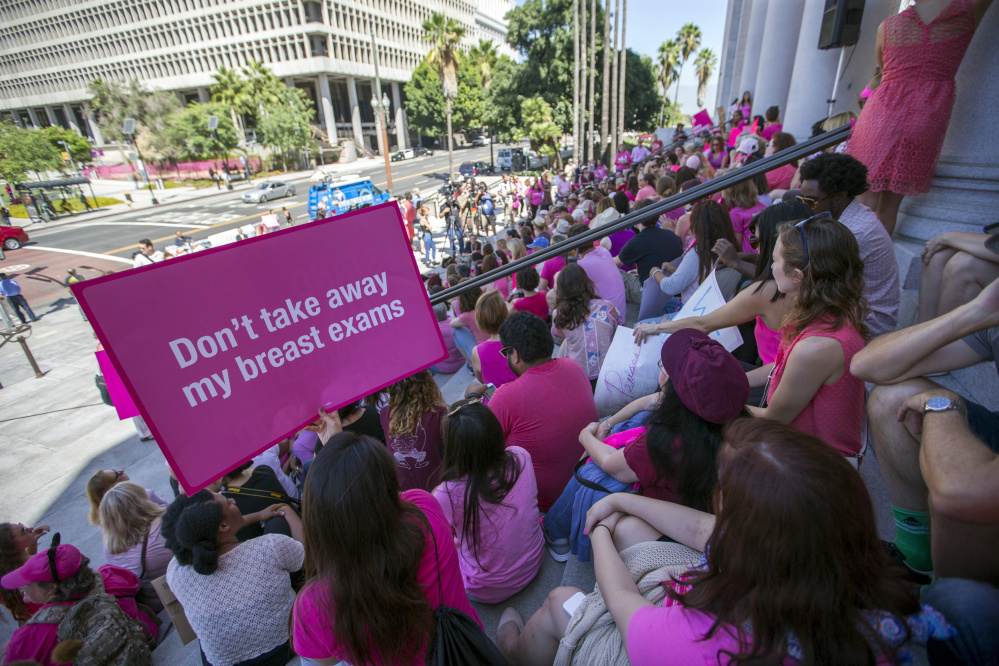This year, Planned Parenthood came closer than it has in decades to losing federal funding. Next year, it’s sure to face another budget fight – and the stakes are high for thousands of Mainers and their families.
Planned Parenthood has received federal funding since 1970, thanks to legislation signed into law by President Richard Nixon. But the legalization of abortion in 1973 and the growing clout of religious conservatives in the Republican Party galvanized efforts to limit family-planning groups’ access to federal aid.
The issue came to a head in 2015, when members of Congress – swayed by baseless accusations of illegal activity by Planned Parenthood – tried to strip the group of about $450 million in federal funding. The Senate approved the defunding measure last Dec. 3 (Maine’s Susan Collins was one of just two Republicans to vote against the proposal); the House followed suit on Jan. 6, and two days after that, President Obama vetoed the measure.
That the bill got that far, however, was a symbolic victory, and supporters of abortion rights are justifiably fearful of a renewed attack. Vice President-elect Mike Pence has long advocated for blocking federal funding to Planned Parenthood. President-elect Donald Trump said during the campaign that he would defund the organization. And Trump’s pick to run the Office of Management and Budget, Rep. Mick Mulvaney, R-S.C., helped lead the charge in favor of defunding in 2015.
Planned Parenthood, which relies on the federal government for about 40 percent of its budget, sees 10,000 patients a year at its four offices in southern Maine. Half of them are from households earning 150 percent of the poverty level (around $30,000 a year for a family of three).
The nonprofit provided $3.5 million worth of free or discounted care in Maine in 2015. If it were gutted, many of its patients wouldn’t have another place to turn. Nationally, according to the Guttmacher Institute, among women who get care at a family planning center like Planned Parenthood, four in 10 report that it’s their only source of care.
Driven by opposition to abortion, the unrelenting offensive against Planned Parenthood overlooks the fact that abortion gets no federal appropriations. It also fails to take into account that abortions make up just 3 percent of all services offered there. Patients go there for annual exams, sexually transmitted disease tests and cancer screenings – not to mention affordable birth control, which allows a woman to delay becoming pregnant until she gets an education and a good job, thus helping her avoid or get out of poverty.
Opponents of Planned Parenthood in Washington are vocal, but clear majorities of Americans oppose cutting off the group’s federal funding (this includes nearly half of Trump backers, Politico/Harvard pollsters found in September). The public is on the side of the millions nationwide who stand to lose access to critical services – lawmakers should be, too.
Send questions/comments to the editors.



Success. Please wait for the page to reload. If the page does not reload within 5 seconds, please refresh the page.
Enter your email and password to access comments.
Hi, to comment on stories you must . This profile is in addition to your subscription and website login.
Already have a commenting profile? .
Invalid username/password.
Please check your email to confirm and complete your registration.
Only subscribers are eligible to post comments. Please subscribe or login first for digital access. Here’s why.
Use the form below to reset your password. When you've submitted your account email, we will send an email with a reset code.